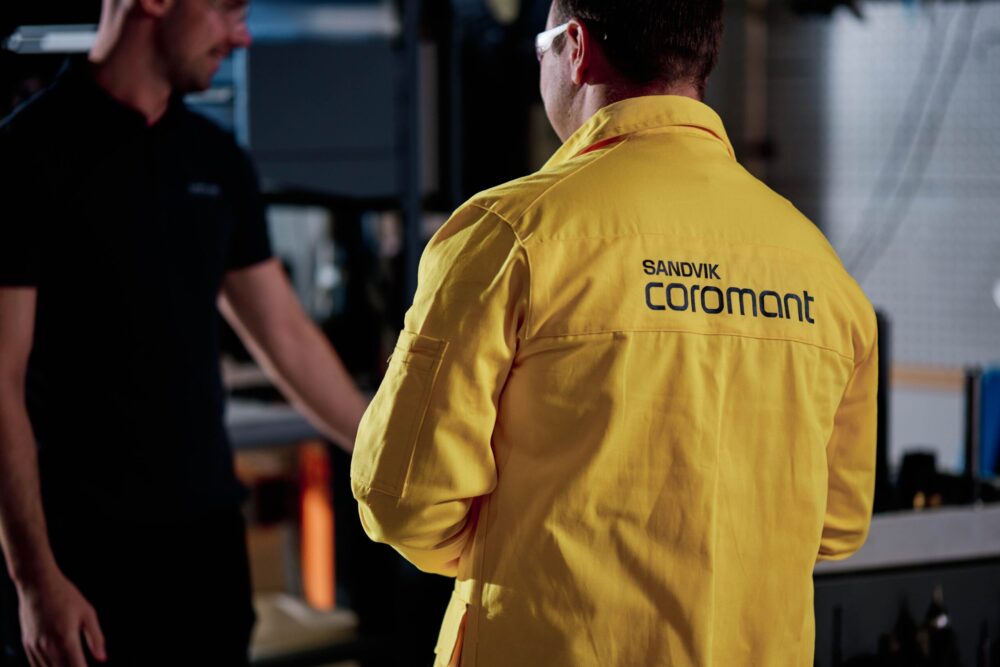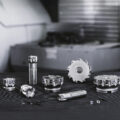Sandvik Coromant shares machining safety insights for World Day for Safety and Health at Work
When we think about digitalisation in manufacturing, it’s often in terms of improvements in efficiency, data insight and process reliability. However, it also offers significant benefits for operator safety. As we observe World Day for Safety and Health at Work, Tobias Unosson, Partner Manager – Digital Products and Services at metal cutting and machining expert Sandvik Coromant, argues that the role of digital tooling in creating safer machining environment deserves closer attention.
Machining has always been a hands-on job. Operators depend heavily on their experience and instincts, often working in close proximity to heavy equipment, sharp tooling and fast-moving components. While manual skills are still vital, the growing adoption of digital tools has introduced safer ways to monitor and manage complex machining tasks.
This shift is especially critical as the industry continues to grapple with a growing skills gap. With a projected deficit of 7.9 million manufacturing workers globally by 2030, according to a recent Korn Ferry study, the need to ensure safety for less experienced operators is more urgent than ever. It’s essential that newer workers are equipped not only with the right skills but also with technologies that protect their safety and wellbeing.
The rise of remote monitoring
Remote monitoring has emerged as a powerful tool for improving operator safety, offering real-time visibility and enabling early detection of potential issues. In many machine shops, operators still rely on visual cues or manual measurements to assess things like vibration, heat build-up or tool deflection. These checks often require getting physically close to the workpiece, especially during setup or troubleshooting, introducing risks in environments that are already hazardous.
With digital tooling, many of these tasks can now be performed from a distance. Sensors embedded in cutting tools or tool holders track key parameters like load, vibration, deflection and temperature as the machining process runs. This data is then transmitted to a display interface, tablet or even directly to the CNC machine, enabling operators and engineers to monitor performance in real-time without being right next to the spindle.
A closer look at vibration
Vibration is a common challenge in many machining operations and while it’s often associated with part quality or tool life, it also has implications for operator safety. Excessive or uncontrolled vibration increases the likelihood of unexpected machine behaviour, which can lead to tool breakage, damaged workpieces or even accidents that put operators at risk.
Typically, operators detect dangerous vibration through audible resonance or by feeling unusual movement in the machine. But by the time those signs become noticeable, it’s often too late to prevent damage or safely intervene.
Digital tooling has changed this dynamic. With sensors embedded in tools and tool holders, vibration levels can be continuously monitored, offering early warnings when conditions begin to shift. This allows operators to make proactive adjustments, such as modifying feed rates or spindle speeds, before instability becomes a serious issue.
Advanced systems such as Silent Tools™ Plus, Sandvik Coromant’s sensor-equipped turning adaptors, take this a step further. When paired with CNC machines using CoroPlus® Connected technology, these systems can automatically mitigate machining issues — such as initiating a stop and retract when vibration exceeds safe thresholds — based on limits set by the operator. Connected, integrated tooling like this reduces the level of manual intervention needed, offering significant benefits for high-precision or lights-out machining operations.
In applications such as aerospace or mould and die manufacturing, these capabilities are especially valuable. Long overhangs, thin-walled parts and delicate materials all make vibration more likely — and more dangerous. Real-time feedback helps engineers maintain cutting stability and safety while reducing the need for frequent manual checks.

Taking a step back
Beyond immediate risk reduction, digital tooling also contributes to long-term operator health. Continuous exposure to vibration, heat and noise can lead to chronic issues such as hearing loss or repetitive strain injuries. By minimising the need for close-up inspections and manual monitoring, digital technologies help reduce these physical stressors and support safer working conditions over time.
This is one way digitalisation supports Sandvik Coromant’s broader philosophy of Manufacturing Wellness, a holistic approach to building more sustainable and resilient manufacturing operations. Sandvik Coromant notes eight key habits that improve manufacturing wellness, including adapting to new technology, embracing data-driven insights and developing your people.
This mindset encourages manufacturers to think beyond short-term productivity and focus on creating operations that are adaptable, efficient, and healthy for the people who run them. Reducing physical strain, minimising unplanned interruptions and improving control over machining conditions are all key steps toward a safer and more sustainable future.
As the manufacturing industry continues to adopt digital solutions, it’s crucial that safety remains a key priority. By embracing smarter, more connected tools and processes, manufacturers can protect their most valuable assets — their operators — while enhancing the performance and longevity of their machines.
To find out more about how Manufacturing Wellness could improve the safety and overall performance of your operations, visit the Sandvik Coromant website.








